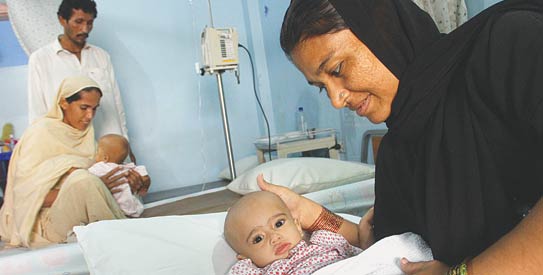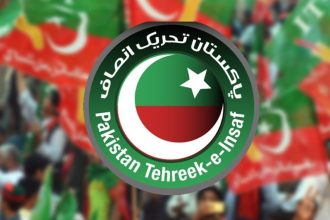Pakistan is among the very few developing countries whose success rate in curing its children suffering from cancer is among the least compared to the rest of the world.
The country cures just 15 per cent of its children; in most developing countries it is 20pc and in the developed world it is as high as 75pc.
“Childhood cancer is a success story of modern medicine. In developed countries more than 75pc children are cured of cancer,” said a report by the Children Cancer Foundation (CCF).
Poor cancer awareness, inability to afford treatment, lack of expertise and centres, and dearth of trained human resources are some of the key challenges developing countries are confronting in dealing with the disease.
Pakistan has around 70 million children of less than 15 years of age. According to the Karachi Cancer Registry, childhood cancer incidence is nine per 100,000. Experts say 6,000 children get afflicted with cancer each year in Pakistan.
The CCF estimates that 60pc children do not get proper diagnosis and treatment.
It said the analysis of the combined data from the Children Cancer Hospital and the National Institute of Child Health (NICH) showed 40pc of children being treated did not get active protocol because of advanced stage of the disease and lost their lives in the follow-up.
“Only 50 per cent of those getting active protocol are cured. Based on the above data overall 15pc children are cured of cancer in Pakistan,” it said.
Figures accepted by experts and officials show that on a national level only 13pc (800 out of 6000 cases) are cured. Experts believe reasons for this dismal outcome are lack of expertise and facility, distance from treatment centre and inability to afford treatment.
Officials at the oncology unit in NICH said that last year’s data showed a substantial increase in the number of new registered cases.
According to the NICH data, last year 645 children were registered in the oncology unit which is much greater than 10 years ago in 2006, when the number was 225.
Some 85pc patients belonged to Sindh, with 47pc in Karachi, six per cent from Balochistan and the remaining from the rest of the country.
Experts said leukaemia (blood cancer) was the most common cancer among children followed by lymphoma and Wilm’s tumour (tumour of the kidney).
Last year’s hospital figures are not different from what has been witnessed previously. They show that some 18pc patients abandoned their treatment, which officials said, was because of the lack of affordability to bear expensive on boarding and lodging for the families of patients coming from outside the city.
“The significant advances in the field of paediatric oncology bring us a great sense of optimism that new discoveries and technologies will also save those patients who are currently not cured,” said an official.
The non-governmental organisation, Child Aid Association, conducted a survey in various schools and shared the results which stated that 95pc of children were eating chhalia, 2pc each ate gutka or chewed paan, while the remaining one per cent smoked cigarettes or sheesha.
“At present, some 80pc of cancers in children are curable. Cancer in children can also be prevented,” said an expert, adding that due to lack of awareness about cancer in children, patients were referred in the late stages of the disease when their chances of survival had diminished.






